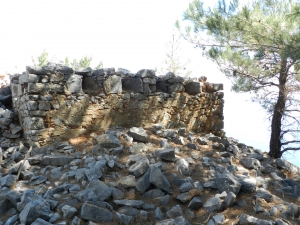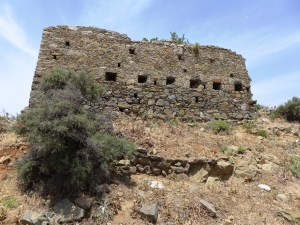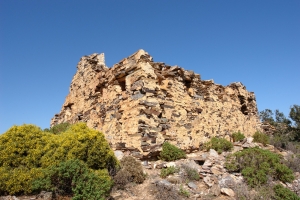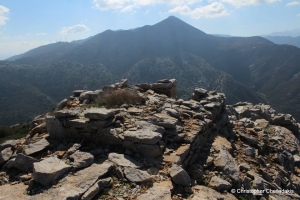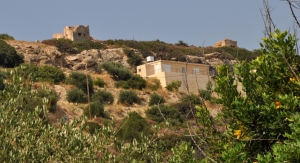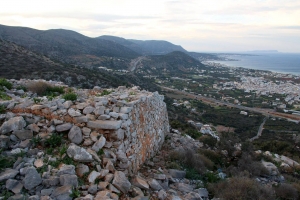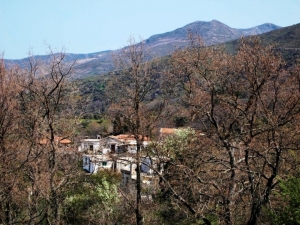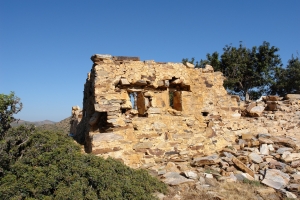The mountainous and inhospitable province of Sfakia hosts several small and large koules, ie Ottoman towers, which was built by the Ottomans to control this revolutionary area. One of the most unknown forts lies in ruins in the mountains west of the gorge of Samaria and you can reach it via the trail of the known Koules of Agia Roumeli.
At the eastern edge of the valley of Amari, two towers were built, the Koules of Vathiakos and Lochria. The Koules of Vathiakos, built on the hill south of the village, served a dual purpose. First, it controlled the passages to Messara.
Fodele area was a very important passage during the Venetian and Turkish Era, which made the occupiers build towers and forts at almost every peak. The Turks wanted to fully control the passage of Fodele and simultaneously monitor the bay (the current beach of Fodele), where the Greek ships often beached for supporting the rebels.
At the north coast of Heraklion, between the beaches of Agia Pelagia and Fodele rises the steep low range of Bobias (max altitude is 423 meters). This area actually belongs to the small range of Kouloukonas. Despite its low altitude, it is a really wild place with slopes in the west and north side that raises sharply above sea.
Above Episkopi, province Ierapetra, we meet one Ottoman Tower (Koules), one of the many built in 1868 by the ottoman Avni Pasha. The defensive tower was built there to control the passage of the isthmus of Ierapetra.
South of Malia rises a small mountain which locals call Kouledes. Its name is taken after the Turkish fortresses (koule) built by the Ottomans to control the fertile plain of Malia. The Turkish forts of Malia had eye contact so as to communicate in case of emergency. Although they have almost been completely destroyed, the existence of so many fortresses in such close distance indicated how important the plane of Malia and the surrounding passages were for the Ottomans.
At the wider area of Kandanos, the Ottomans built four towers with loopholes to protect themselves from the rebels. Traces of one tower are still preserved above the village of Vamvakades, while the towers at Anisaraki, Nychteriano and Koufalotos have not survived. The tower of Vamvakades was built at an altitude of about 1040 m., being the tower with the highest altitude in Crete.
One of these Turkish Towers was built at the position Kelia, just above Fodele beach (south of the beach) overlooking the sea. Today some ruins of the fort remind of its glory past, although completely abandoned by the local government. Next to it, we meet the chapel dedicated to Saint John, which once served as a monastery. The cells (kelia) of the monks gave their name to the area.











